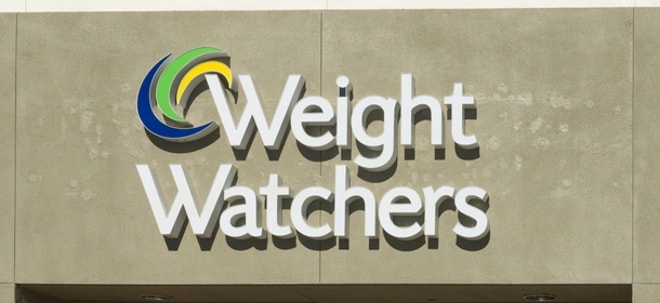Reverse Mergers for
Foreign Companies
BY RONALD STONE
F E AT U R E S
The United States is one
of the best places in the
world for foreign (non-
U.S.) companies to raise
capital and create a public
market for their stock.
Foreign companies have for years sought
access to the U.S. capital markets. With the
U.S. dollar at its weakest level in 30 years, there
has not been a better time to do so. A weak
dollar means that the dollar-denominated
earnings of a foreign company appear much
more attractive to U.S. investors. A weak dollar
also means that transaction costs appear
less expensive to foreign companies.
Choosing to go public in the U.S. is not an
easy process. Perhaps the biggest hurdle a foreign
company must overcome is complying
with U.S. GAAP standards. If the company
follows International Accounting Standards
and chooses not to restate to conform to U.S.
GAAP standards, then that company must
add a footnote to its financial statements
showing how the financial statements differ
from GAAP standards. In addition to U.S.
GAAP considerations, companies should also
consider the general benefits and drawbacks
to becoming a U.S. reporting company. The
chart below shows why it does and does not
make sense to be a public company in the U.S.
Foreign companies can enter the U.S. capital
markets in basically two ways: through an
initial public offering (“IPO”) or a reverse
merger. An IPO is a preferable option for larger
companies. It is generally not a good
option for smaller companies because an IPO
is complex, time-consuming and expensive.
Also, smaller companies have difficulty finding
willing investment bankers to do the deal.
Investment bankers typically work with larger,
more established companies in bigger deals.
Further, certain foreign governments, notably
China, restrict smaller companies from doing
an IPO in the U.S. Because of these reasons,
Benefits of Being a Public Company /Drawbacks of Being a Public Company
Liquidity for investors /Less confidentiality
Facilitates acquisitions — /Stock as currency Burdensome reporting requirements
Higher valuations /Ownership dilution
Greater access to capital markets / Greater liability
Enhanced prestige Higher costs many small and mid-sized foreign companies
are better off with the alternative - a reverse
merger.
A reverse merger may be the most cost efficient
way for small and mid-sized foreign
companies to raise money and go public in
the U.S. Doing a reverse merger, however,
makes sense only if the company is profitable
and has audited financial statements. Once a
company decides to proceed with a reverse
merger, it must identify the “shell” company
into which it will merge. This company is
referred to as a “shell” because it is a legal entity,
less all assets and liabilities. It is critical
that a thorough due diligence be conducted
on the proposed shell to uncover any hidden
liabilities and assure proper legal structure.
Often a Private Investment in a Public
Entity (“PIPE”) accompanies a reverse merger.
PIPE is the vehicle through which
investors add capital to the new entity. These
investors generally have a short investment
time span. The main investors in PIPEs are
hedge funds. Demand for hedge funds by
institutional investors is predicted to grow
nine-fold between 2005 and 20151, with corporate
and public pension plans expected to
lead the way. That equates to a 10-year compound
annual growth rate of 24 percent. The
total worldwide market for hedge funds is
expected grow from $281 billion to $2.5 trillion.
2 The growth in hedge funds means that
there is no shortage of cash available to fund
reverse mergers.
To complete the reverse merger, the shell
company issues additional shares of its stock
to the PIPE investors and the foreign company.
The shell company then changes its name
to the foreign company’s name. The shell is
the surviving company into which the foreign
company has merged, but it has mostly new
ownership and a new name (“Newco”). After
the merger,Newco will file a registration statement
with the Securities and Exchange
Commission (“SEC”) to notify the SEC of the
merger and to register the new shares for sale.
SEC Rule 415 limits the initial registration of
Newco shares to 30%-35% of the total outstanding
shares.
Once the stock is registered, Newco should
hire an investment relations firm to help market
the securities. Unlike an IPO, which
involves significant investment coverage and
marketing of the company and its stock, a
reverse merger is done with less publicity. In
effect, a company doing a reverse merger is
responsible for marketing its own stock. An
investment relations firm is crucial during the
reverse merger process to help get the word
out. Having proper marketing will help
ensure an active and stable market for the
company’s stock, one of the chief requirements
of PIPE investors. PIPE investors look
for stocks with a stable market to provide
them a way to cash out without damaging
Newco’s market value.
A weak U.S. dollar is good news for foreign
companies. There is not a better time for a foreign
company to look to the U.S. to raise
money and/or list shares in the U.S. stock markets.
While there are different routes to doing
this, many small and mid-sized foreign companies
can realize significant advantages in doing
a reverse merger. Under the right conditions, a
reverse merger may be the easiest and cheapest
way for a company to go public.
Ron Stone is a principal of Profit Planners West,
a consulting firm for the reverse merger industry.
You can reach him at rstone@profitplanners.
com.


 Thread abonnieren
Thread abonnieren


